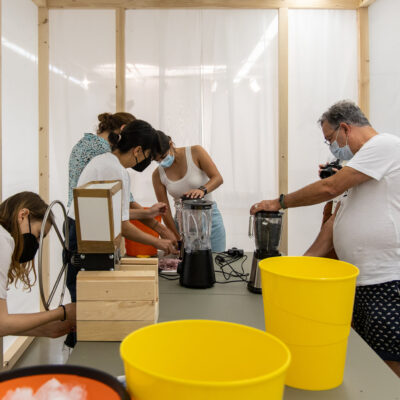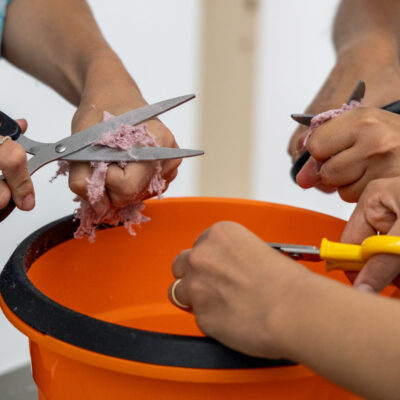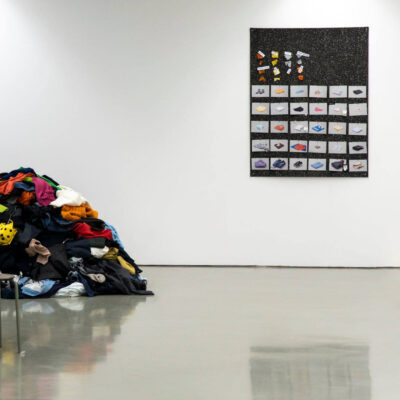4. August 2021
FROM LIFE WITH A SHEEP AND TRAPPING TOXIC TEXTILES
+++ The Vienna based designer and researcher Alexandra Fruhstorfer is represented in the MAK DESIGN LAB with her work Transitory Yarn (2016). In her contribution for the MAK-Blog she shares some thoughts on her projects at the intersection of humans and non-humans, culture, nature and technology. +++
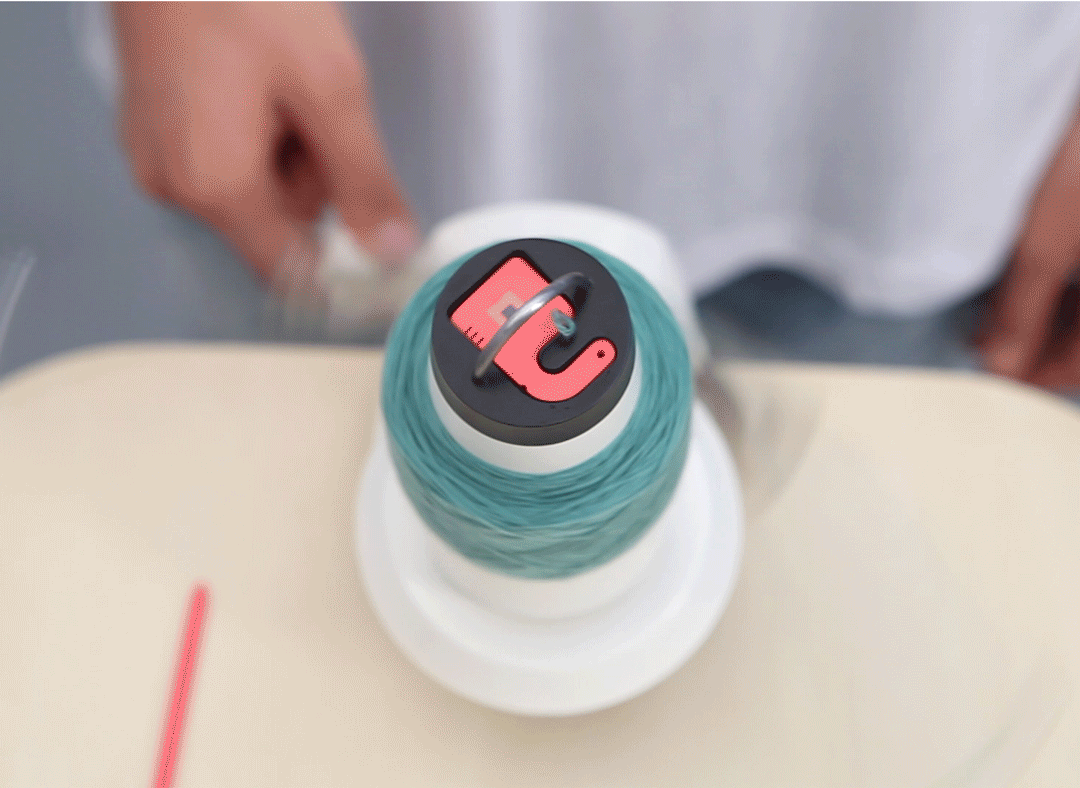
Alexandra Fruhstorfer with Max Scheidl & Anna Neumerkel, Transitory Yarn, 2016 © Transitory Yarn Collective
The Post Petroleum Age?
Coal mines are shutting down, oil heating systems are being phased out and petrol-powered cars will soon be a thing of the past. One might think the Oil Age is finally coming to an end. However, polyester fibre production is anticipated to triple by 2050. The textile industry might be one of the most overlooked sectors contributing to the carbon ruins of our petroleum-centered production era. While the last fossil resources are fracked from below the surface of our planet, we drown in masses of cheap clothing made in countries with working conditions that are far from acceptable. It’s a profitable business concept that benefits large corporations on the backs of exploited workers and the environment.
Are alternatives on a systemic level even imaginable?
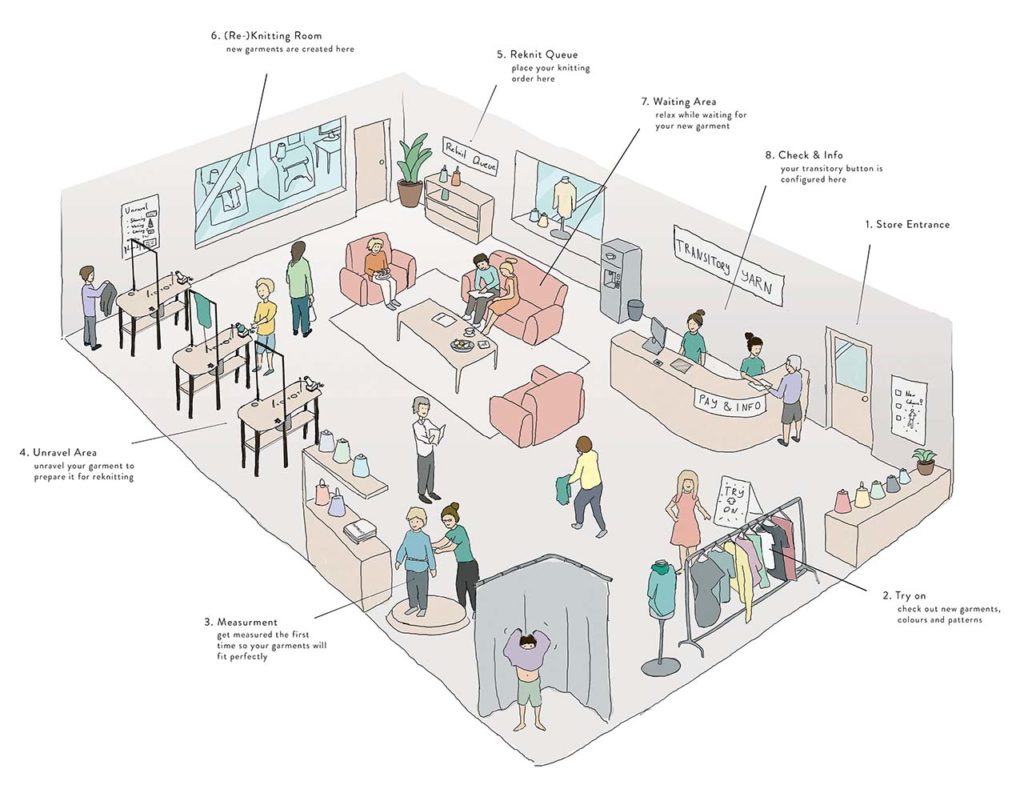
Alexandra Fruhstorfer with Max Scheidl & Anna Neumerkel, Transitory Yarn, 2016 © Transitory Yarn Collective
Transitory Yarn – How can we design for future production processes?
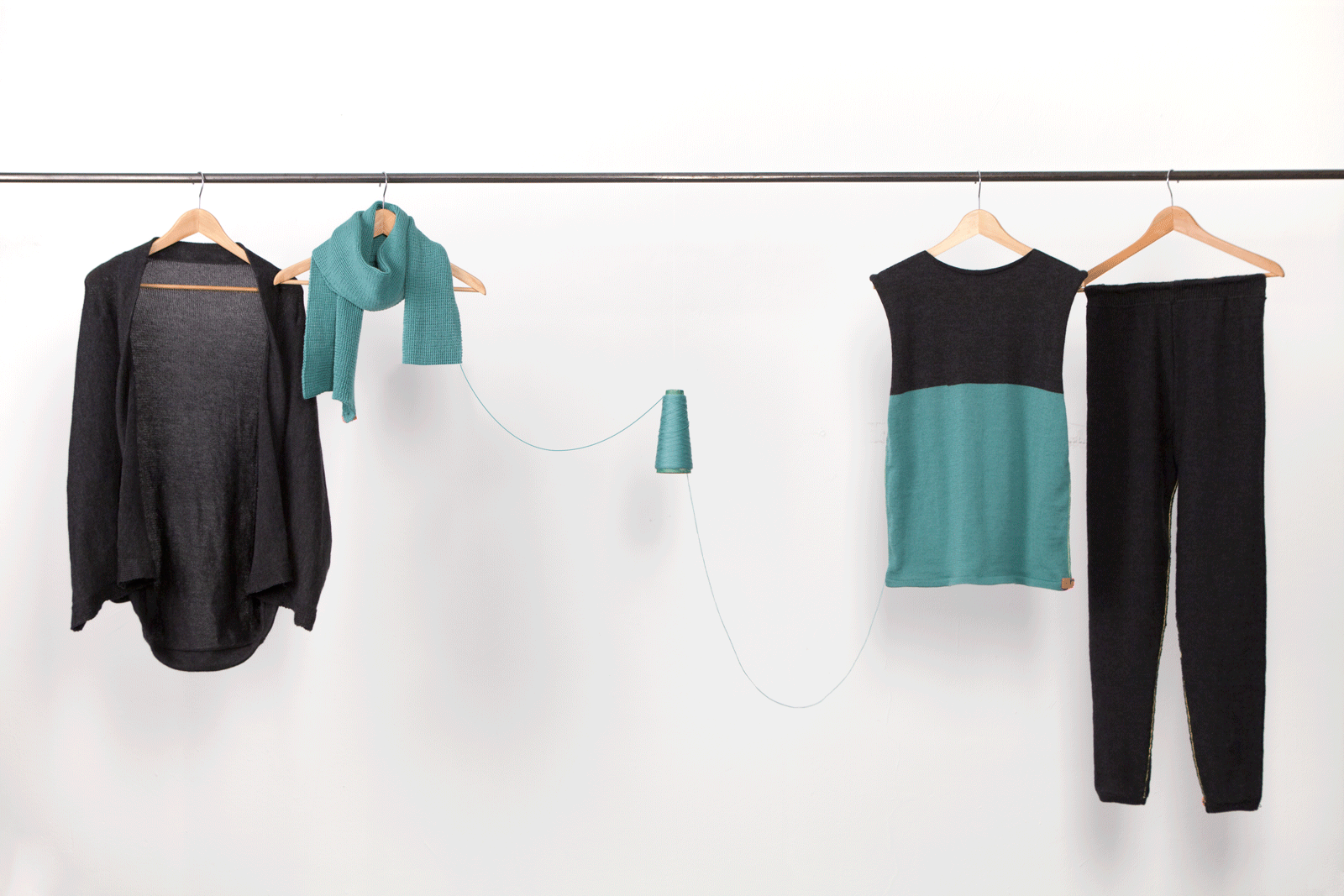
Alexandra Fruhstorfer with Max Scheidl & Anna Neumerkel, Transitory Yarn, 2016 © Transitory Yarn Collective
Transitory Yarn (was created in collaboration with Max Scheidl and Anna Neumerkel at the studio of Industrial Design 2 at the University of Applied Arts and is at the moment also part of The Museum of Vibrant Matter at Porto Design Biennale 2021), our project shown at MAK DESIGN LAB, is a prototypical proposal to enable circularity in the making and unmaking of garments using knitting technology. By unraveling unused items and reknitting them again, the resource will sustain through several product life cycles.
Turn your summer skirt into a winter jumper, or add some wool so the garment grows with you. With one cone of wool for a lifetime we propose a new material standard for the textile industry.
But how would garments have to change in order to meet this new principle of production?
The collection we developed is specifically made to suit this process. So the patterns and seams are designed in a way that enables the garment to be disassembled easily. By using wool – an amazing material with self-cleaning abilities – as a basic resource, the garment barely needs to be washed, but rather cared for.
Once your piece of clothing has lost its purpose, enjoy the mesmerizing effect of your dissolving garment using the unraveling machine and become part of transitioning your yarn into another life cycle. The performative process celebrates a deliberate transience of objects, while honoring the basic resource as a starting point for something new. It is a simple idea that could easily turn into a local service in every shopping district.
In times when products are not made to last while resources are becoming scarce, Transitory Yarn is an optimistic experiment to inspire new imaginaries for future production processes.
Life with a sheep
From my perspective now I would rather take the concept to the extreme and propose “Live with a sheep!”. The wool would be even more at the center of the narrative. What if every person had a sheep to look after, to truly relate to where their materials come from? Sure, that’s not an economic way of looking at things, but that’s the point rather than the downside. With economics we might not be able to repair what we broke (though without, it would also be difficult), but with mutualism and a sense of care we probably could. Theorists like Donna Haraway agree, that we urgently need to rethink our relationships to what we call “nature” and to the other critters on our planet to be able to survive as humankind. So why not live with a sheep? (Or with a flax stalk?)
Our material legacies
However, we do not only need future perspectives on the production of textiles, we urgently need to reflect on how to deal with our material legacies from the past.
As political theorist, philosopher, and new materialist Jane Bennett expressed it in her book Vibrant Matter:
“[…] would patterns of consumption change if we faced not litter, rubbish, trash or “the recycling”, but an accumulating pile of lively and potentially dangerous matter?”
A recent study found that just by walking around in polyester clothes we release hundreds of thousands of pieces of microplastic into the atmosphere within only a few hours.
So instead of an accumulating pile, it might be more like an almost invisible layer covering the entire surface of our planet. So what if we treat plastic textiles contaminating our atmosphere, oceans and soil as a body of toxic matter?
No more fleece sweaters from plastic bottles!
While microplastics from sportswear are already found on top of the Himalaya and deep down in the Mariana trench, Ikea proudly presents fake sheep wool rugs made from recycled pet bottles.
Nonetheless, research on the various implications of airborne microplastics from textiles is far from new. Already in 2017 researchers found out that earthworms, for instance, build their burrows differently when microplastics are present. This subsequently has an impact on the fitness of the worms and the condition of the soil.
So why recycling plastic in the first place? From a research perspective big corporations should know better; from a marketing perspective, they certainly do. Using recycled plastic is convenient, more convenient than rethinking entire production chains necessary to switch to renewable materials. It even became a major business concept. It’s only absurd that Adidas makes shoes from marine plastic pollution, which turns into global microplastic pollution in the form of microfibers when in use.
Is it madness to claim that a fully functioning, maybe even new garment is better off not being used or even destroyed?
- Alexandra Fruhstorfer and Seçil Uğur Yavuz, Workshop “Captivating the Fibresphere”, 2021 © Fernando Miranda
- Alexandra Fruhstorfer and Seçil Uğur Yavuz, Workshop “Captivating the Fibresphere”, 2021 © Fernando Miranda
- Alexandra Fruhstorfer and Seçil Uğur Yavuz, Work in progress at workshop “Captivating the Fibresphere”, 2021 © Alexandra Fruhstorfer
- Alexandra Fruhstorfer and Seçil Uğur Yavuz, Pile of garments and at workshop “Captivating the Fibresphere”, 2021 © Fernando Miranda
Captivating some fibersphere
For this year’s Porto Design Biennale toxic textiles were in the center of our investigations. Together with citizens from Porto we gathered plastic garments from homes, fashion stores and second hand shops across town in order to captivate their microfibres in a performative disassembly procedure.
With a critical look at recycling, we explored which resources to better take out of the cycle, in order not to be exploited further. The cut, shredded and blended garments made from petroleum were then turned into chunks of solid matter to be archived for the generations to come.
Especially as designers we are trained to look at the matter in the world as material. In our wheel of constant growth and productivity the one or other technology tycoon is already on the lookout for new planets that are worth exploiting.
It’s indeed a challenge to „not make use“ of something and think about the notion of “purpose” differently.
Well, maybe that’s a promising perspective for our future in this profession on a planet in trouble – to become better at unmaking.
Captivating the Fibersphere is a collaboration with Secil Ugur Yavuz for Porto Design Biennale 2021.
A contribution by Alexandra Fruhstorfer, designer and researcher based in Vienna.
